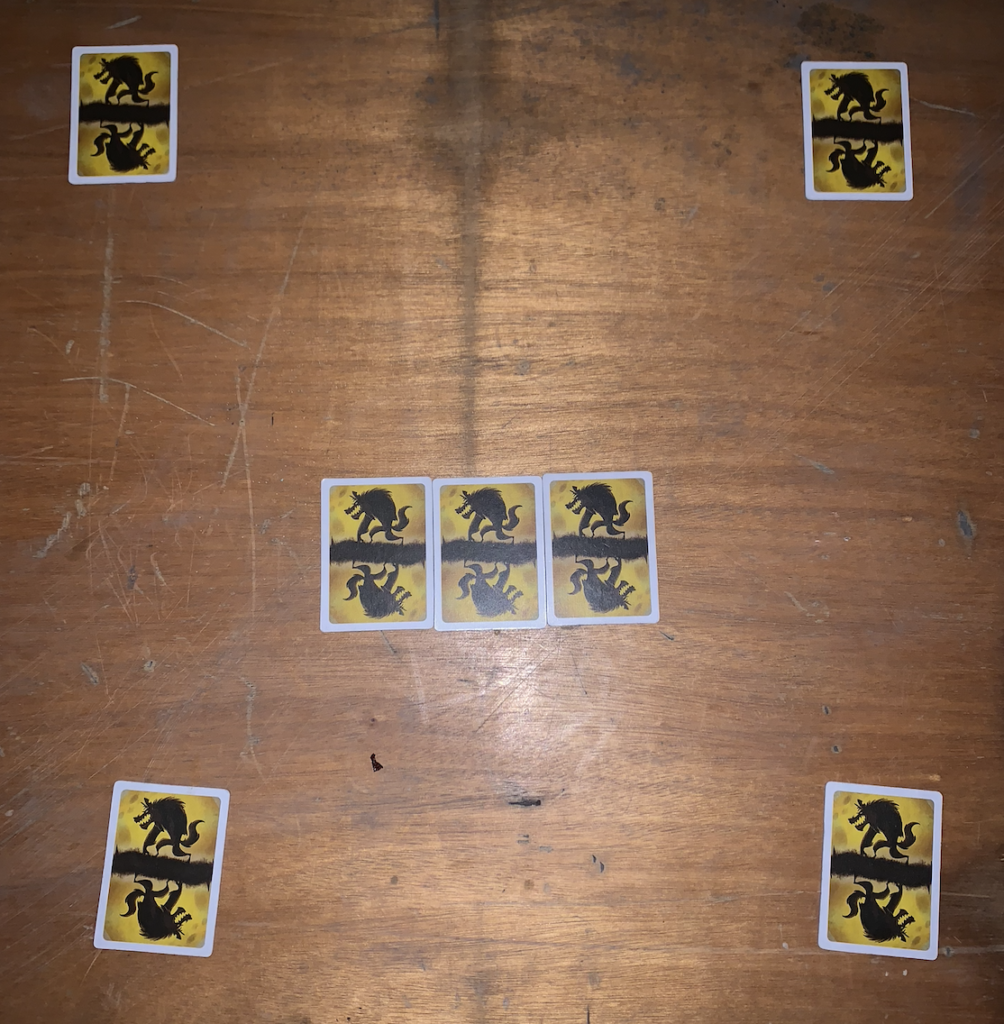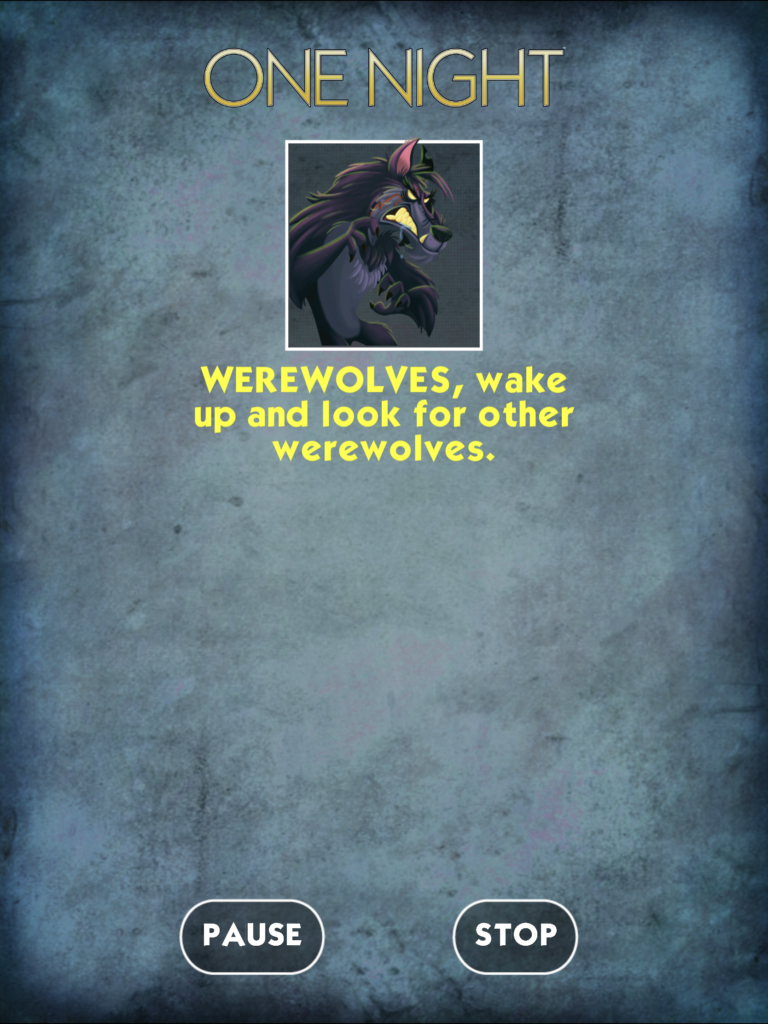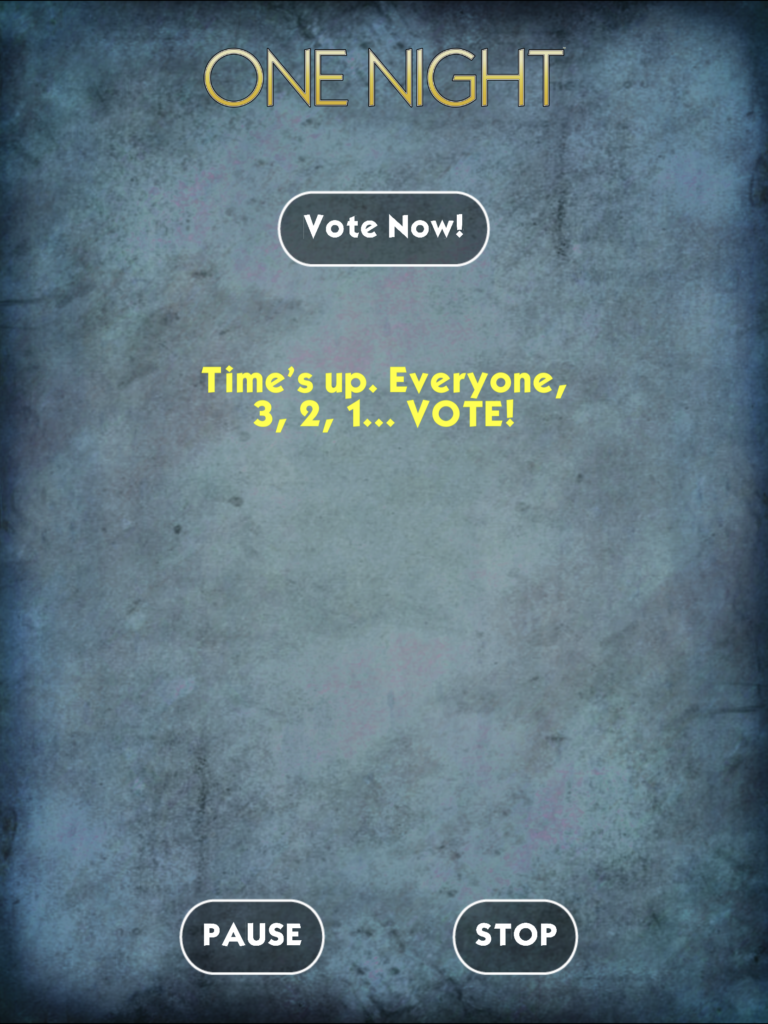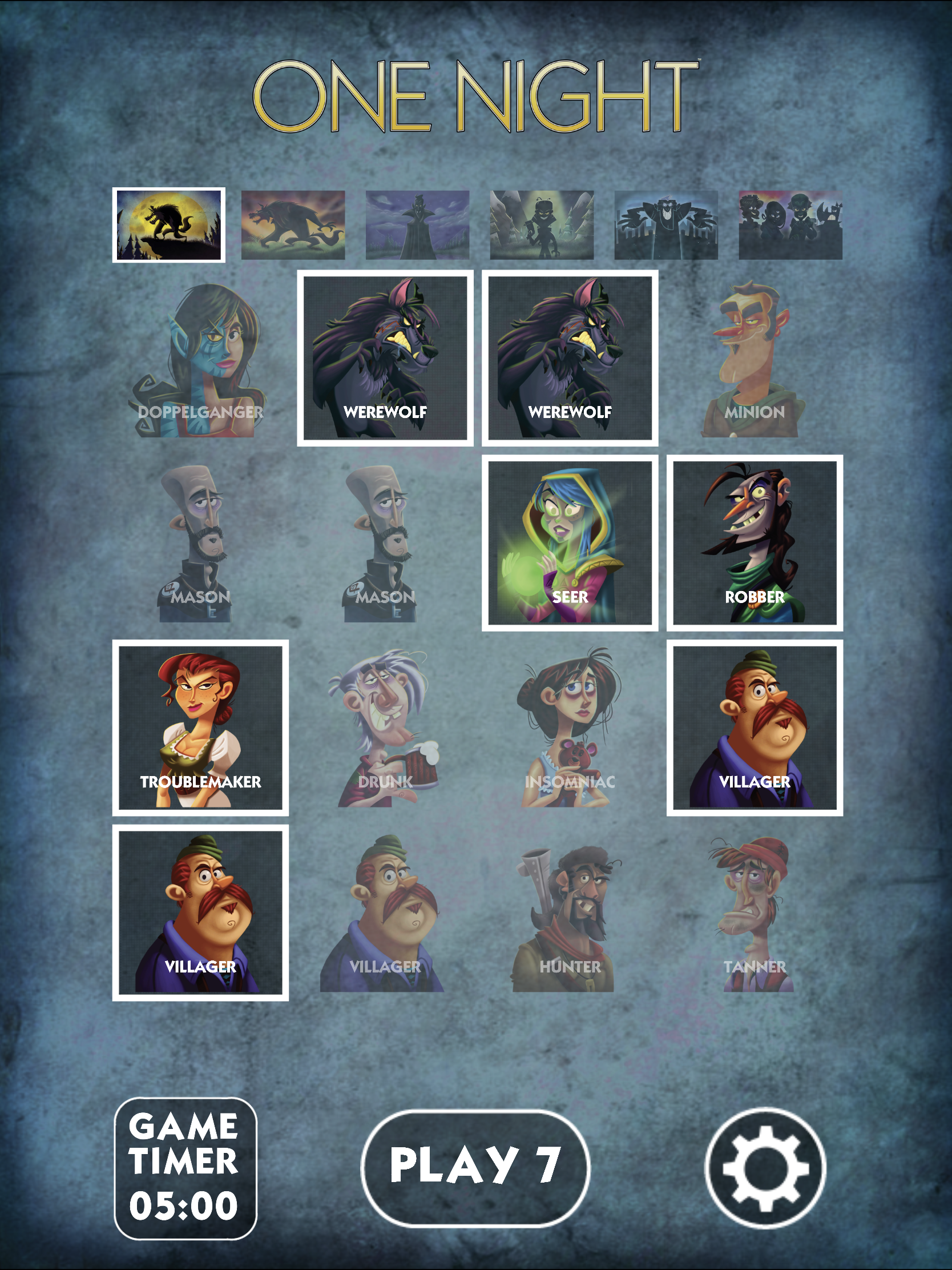INTRODUCTION
I played One Night Ultimate Werewolf with my 3 teammates. The game, created by Ted Alspach and Akihisa Okui, features a hybrid platform with physical cards and an app that provides the narration. The target audience is people of all ages 8 and up, though the game might be more fun for a group of friends who know each other somewhat.
NOTABLE ELEMENTS
In this game, the players (which can range from 3-10 people) try to catch a werewolf (as villagers), evade being caught (as werewolves), or deduce that there are no werewolves. Before the game, players draw from a number of shuffled character cards (the following are the characters we played with):
- 2x Werewolves: Know each other (if there are 2), or can look at a card in the center (if there is 1)
- 1x Seer: Can look at a player’s card, or 2 from the center
- 1x Robber: Can sway his card with another player’s card, then look at his new card
- 1x Troublemaker: Can swap 2 players’ cards
- 2x Villagers

Players look at their roles and place the 3 surplus cards in the center.

Night phase: The app narration then begins, asking players to all close their eyes, then open their eyes in turn and perform their special actions. The order is: Werewolves, Seer, Robber, Troublemaker.

Day phase: Everyone opens their eyes and deliberates. Players’ win conditions may change if their card was swapped, but may not look at their new roles. After 5 minutes. Everyone votes by either pointing at another character (that he thinks is a werewolf) or the center (if he thinks there are no werewolves). The person who receives the most votes is “executed”.

Everyone then reveals their cards, and the winners are decided based on the vote.
COMPARISON WITH CLASSIC WEREWOLF
This game shares a similar premise and mechanics with its namesake, the classic Werewolf (or Mafia). However, it defers in significant ways as well:
- One round only: Games are much briefer which can be a good thing if you’re short on time or prefer a fast game.
- Roles may be swapped: Because of characters such as the Robber and Troublemaker, the role you end up with may not be the one you started with, and you might not even know your new role. This affects the strategy space significantly. In classic Werewolf games, non-werewolf characters may be hesitant to reveal their special roles in fear of becoming the target of werewolves. But in ONUW, this concern is replaced by the fear that their roles are no longer their original ones (they could have their roles swapped with a werewolf, for example, or vice versa). I like this feature a lot. Despite having only one round, this feature helps retain the layers of deception by compelling players to strategize when to (not) reveal their roles, all the while keeping the play time much more reasonable. However, it can be frustrating to play as one role only to find that your role has been swapped.
- Deliberations are timed: Each round is 5 minutes long, after which a vote is forced. This is a good feature because it balances undesirable player strategies such as stalling. The limited resource of time also discourages voting paralysis.
- The number of werewolves is unknown: This feature does add another layer to the game because the relationships of the characters & game is unclear (can be cooperative play, unilateral competition, or team competition). I’m not sure I like it, though. I don’t find it as satisfying figuring out (even if we deduced correctly) that there were no werewolves after all. I prefer the classic Werewolf mechanic where either the villagers or the werewolves win.
- There are 3 unused cards in the center: These serve as clues as to who has what role. It can also be a tool to deceive (if alone, a werewolf can view a card in the center and pretend to be that role). I like this mechanism.
- An app provides the narration: This is nice because no one needs to sit out. It also eliminates human error, though (and also because there are no subsequent rounds) you miss out on the storytelling dynamic that can be a plus for a classic Werewolf game. I feel pretty neutral about this feature.
MOMENTS OF SUCCESS & FAILS
The first round we played was a pretty bad fail, because we naively took the word of a werewolf who claimed to be a villager (which is one of the easiest things to claim). In hindsight, this situation should have warranted more skepticism. In the last round I was a werewolf but tried to shift the blame onto another player, but ended up being disproven on technicality (because the other player did not know the rule that a single werewolf could view a card in the center). It doesn’t feel good losing via metagame. The second round was successful because we correctly deduced that there were no werewolves. While it restores my faith in humanity knowing that trustfulness can pay off (even in Werewolf games), I generally prefer rounds where werewolves are present (so there’s a clear winner and loser).
WHAT I (DIS)LIKED
Overall, I enjoyed the game. Games are of reasonable length, but still retain the immersive, exhilarating, and suspicious discussions that are the cream of the social deduction genre. Compared to the classic Werewolf, I felt significant improvements were made. There was significantly less stalling and paralysis, less game fatigue, and a reasonable level of complexity and strategy. As always, it’s fun to win (regardless of being a villager or a werewolf, though I feel winning as a werewolf is slightly more rewarding). As mentioned before, though, I don’t like it as much if there are no werewolves in a round (if I had a choice, I’d change the game by eliminating this possibility).
Another thing I disliked was that, while a classic Werewolf game excels in fun from narrative, fellowship, and a little bit of fantasy, ONUW lacks largely in narrative (though the fellowship portion was certainly still intact). I understand that the game structure is limited by having only one round, but I feel like improvements can be made. For one, I’d give werewolves a “werewolf-like” feature. I find it very off-putting that, despite being werewolves, the werewolves don’t really eat anyone. I feel like it detracts from the theme, and would probably incorporate the classic mechanism of the werewolves selecting a victim during the night.
One final thing I’d tweak involves game procedure. I’d specify placing the cards closer to one another during the night phase (so players swapping cards can reach them more easily), and placing the 3 middle cards so that they touch each other (so it’s not apparent which ones have been viewed).



